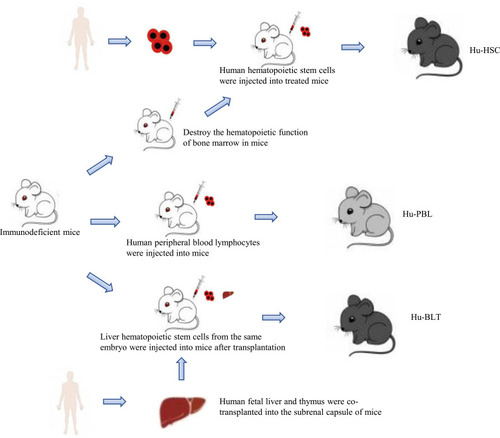Figures & data
Figure 1 Two commonly used classification methods of cancer animal models. Dashed red box represents the classification according to different modeling methods. Another classification is carried out according to different species. Blue arrows indicate the species of animals included in this classification.

Figure 2 Construction method of humanized mice of human immune system. The construction of humanized mice needs to use immunodeficient mice as a tool. By transplanting different human immune organs or cells into immunodeficient mice, three different humanized mice can be constructed. Among them, the Hu-HSC model also needs to destroy the hematopoietic function of bone marrow in mice.

Table 1 Zebrafish Model
Table 2 PDX Model
